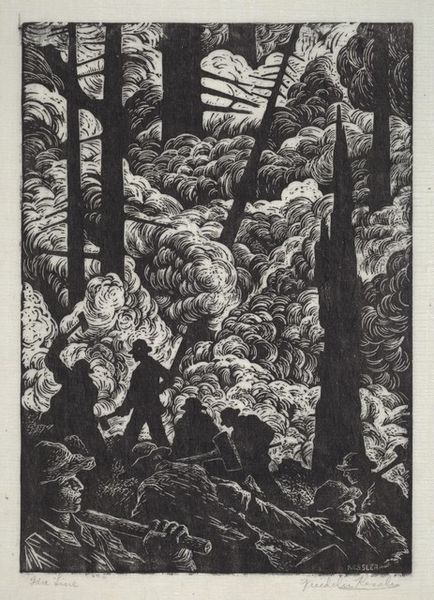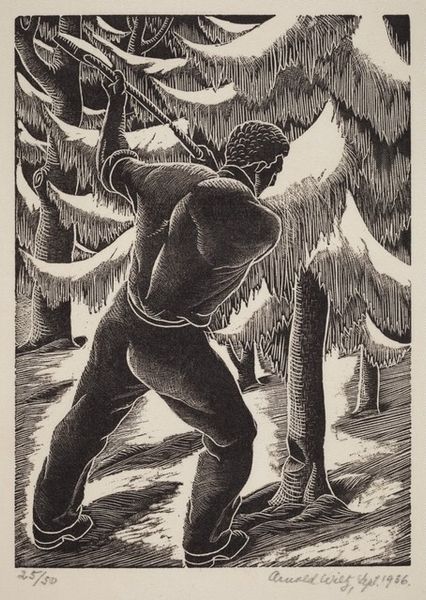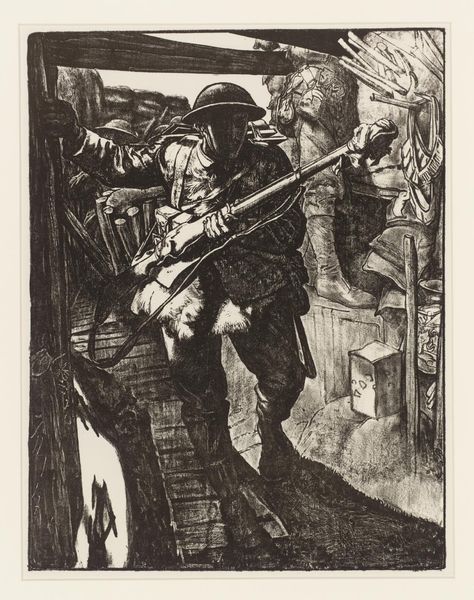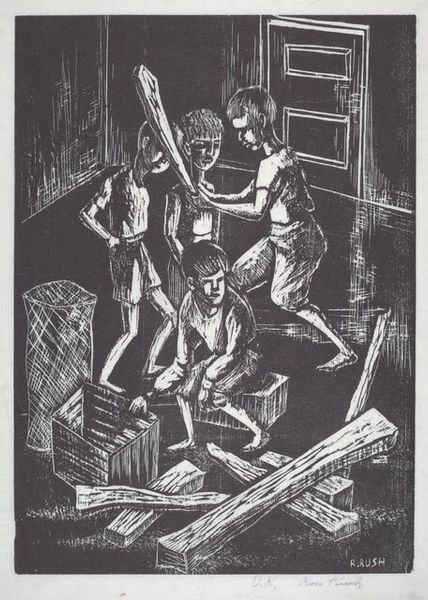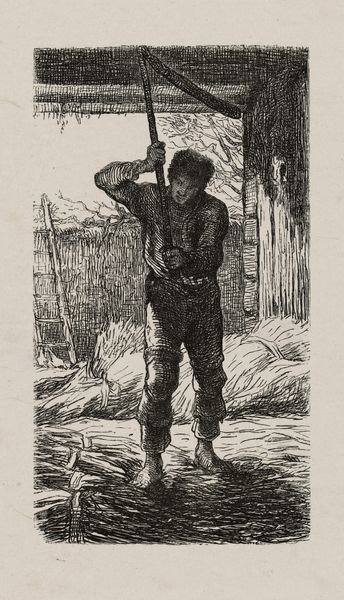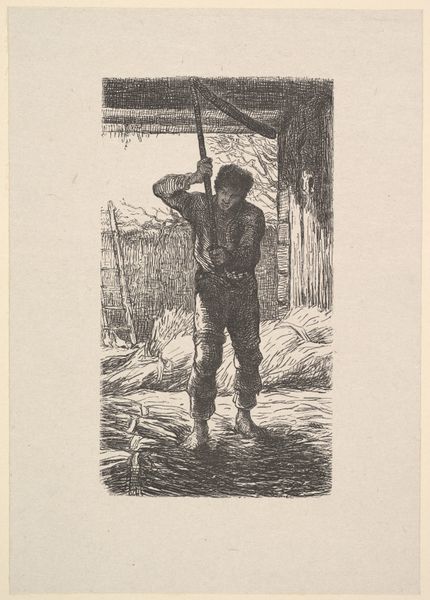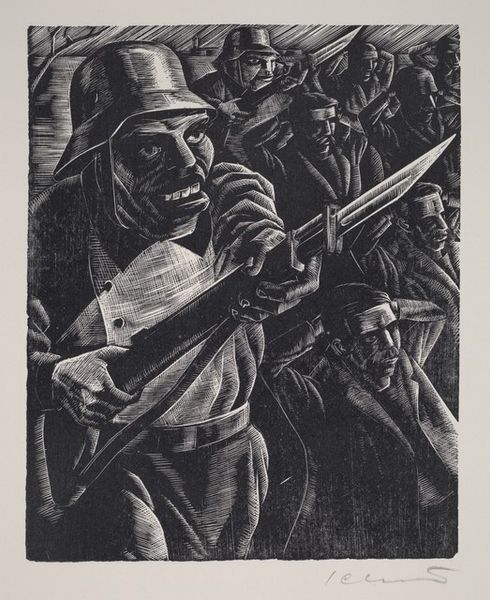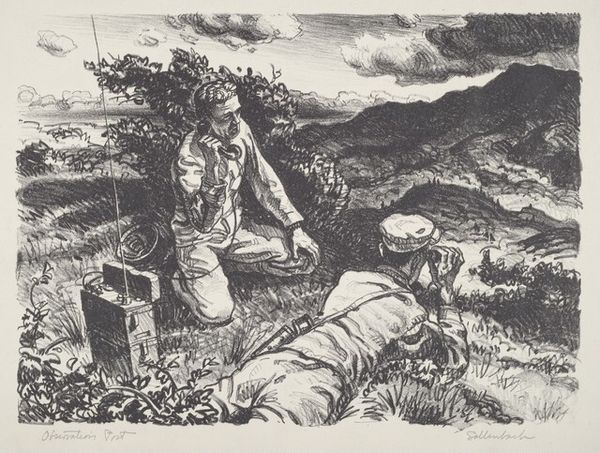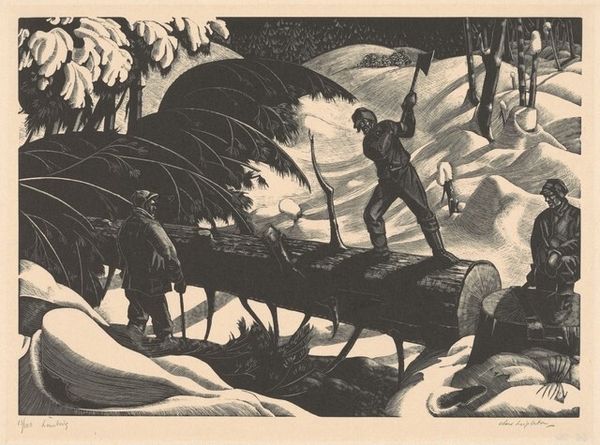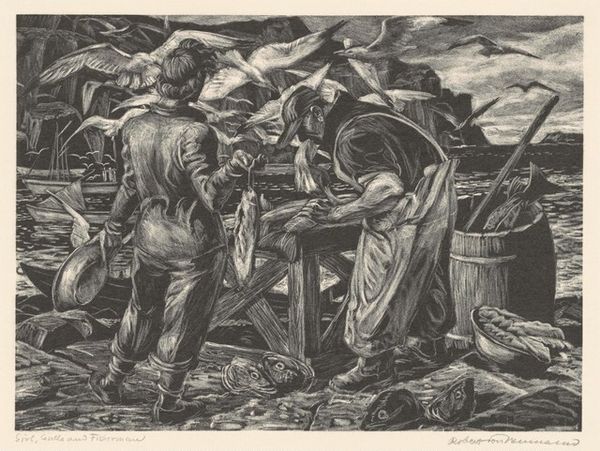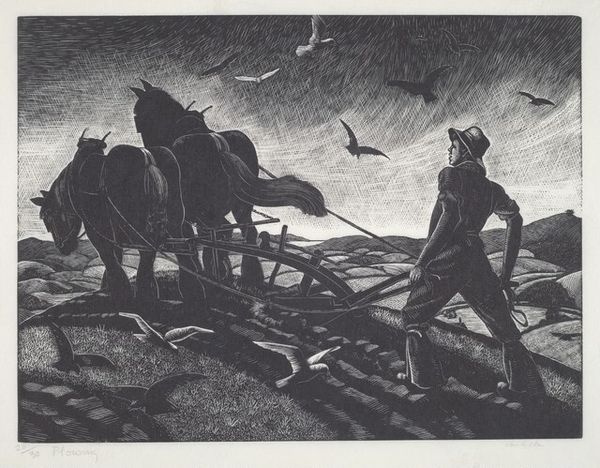
print, woodcut
# print
#
landscape
#
caricature
#
woodcut
#
genre-painting
#
realism
Dimensions: block: 198 x 150 mm sheet: 231 x 206 mm
Copyright: National Gallery of Art: CC0 1.0
Curator: Let’s discuss Florence Bateson's woodcut print, *Untitled (Snow Shovellers)*, from 1936. What are your first thoughts? Editor: Immediately, I’m drawn to the graphic quality – the sharp contrast between light and dark really emphasizes the physical labor, the repetitive action of shoveling, almost a dance of necessity in the urban landscape. You feel the chill. Curator: Yes, and that starkness speaks to a particular time. Look at how the snow isn't idealized; it’s heavy, dirty, compacted. The artist does well showing dignity, but also how people work under harsh urban environments, especially with it dating to the 1930s. The stoicism on the figures resonates within a very socially aware image, an attempt to show the hardship of a populace affected by the depression and severe winters. The bent backs… Editor: Precisely! It’s more than just documentation. I mean, think about the material reality of creating this image: Bateson is meticulously carving away at a block of wood to create these precise lines, mirroring the very physical work depicted in the print. And this kind of printmaking democratized the production of art – a means of sharing images more widely during times when resources are thin. Curator: That’s very insightful, the democratization is true! You know, for me, beyond the process, I’m fascinated by the composition choices, those bare branches almost seem to echo the men bent over, suggesting that there's always hardship but also survival and a connection to the cyclical return, despite all obstacles, that life is there. The building looming in the background does that too; its size overwhelms and the barred windows, with snow stuck in them, symbolize to me confinement, restriction to one's possibilities, but the snow shovelers seem like silent heroes, keeping everyone alive. Editor: I agree, these men are central to the urban process and progress. You mention survival: printmaking like this has long survival times too; inexpensive production ensures that people can experience art and labor that art portrays simultaneously. Curator: We find connections between production and artistic choices often – these choices echo across history and cultures, revealing complex stories within their forms. Editor: Indeed!
Comments
No comments
Be the first to comment and join the conversation on the ultimate creative platform.

